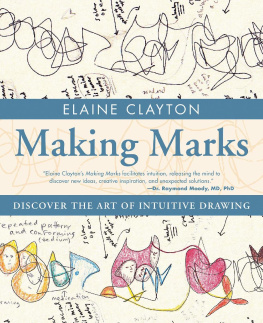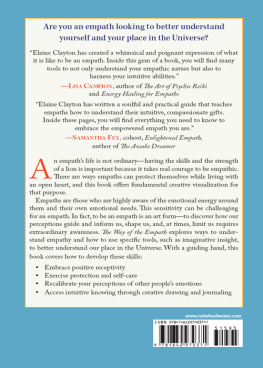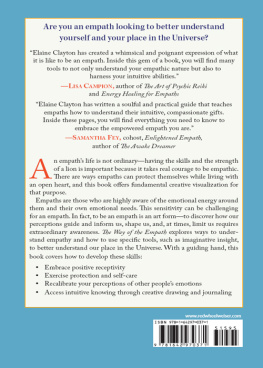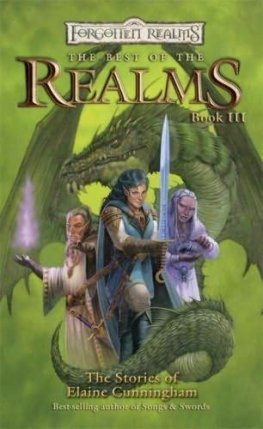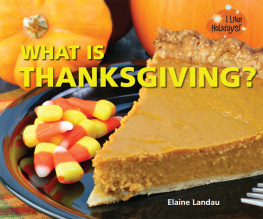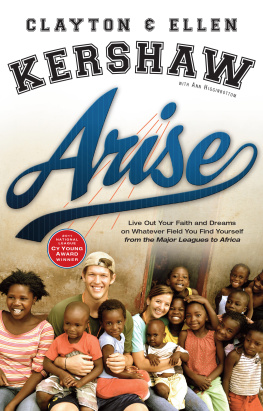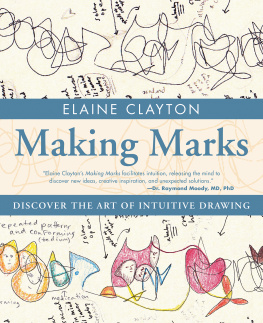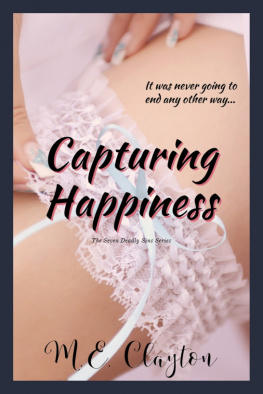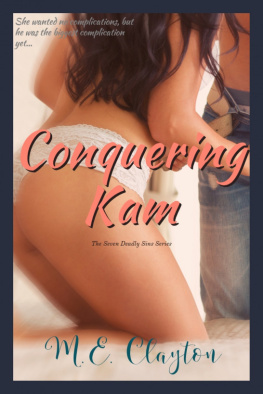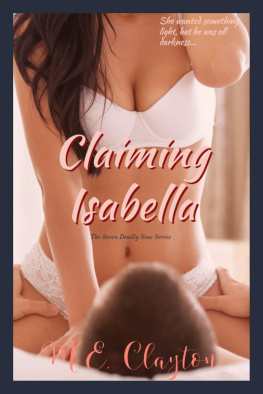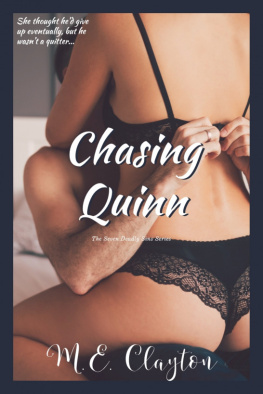Elaine Clayton - Making Marks
Here you can read online Elaine Clayton - Making Marks full text of the book (entire story) in english for free. Download pdf and epub, get meaning, cover and reviews about this ebook. publisher: Atria Books / Beyond Words, genre: Religion. Description of the work, (preface) as well as reviews are available. Best literature library LitArk.com created for fans of good reading and offers a wide selection of genres:
Romance novel
Science fiction
Adventure
Detective
Science
History
Home and family
Prose
Art
Politics
Computer
Non-fiction
Religion
Business
Children
Humor
Choose a favorite category and find really read worthwhile books. Enjoy immersion in the world of imagination, feel the emotions of the characters or learn something new for yourself, make an fascinating discovery.
- Book:Making Marks
- Author:
- Publisher:Atria Books / Beyond Words
- Genre:
- Rating:5 / 5
- Favourites:Add to favourites
- Your mark:
- 100
- 1
- 2
- 3
- 4
- 5
Making Marks: summary, description and annotation
We offer to read an annotation, description, summary or preface (depends on what the author of the book "Making Marks" wrote himself). If you haven't found the necessary information about the book — write in the comments, we will try to find it.
Making Marks — read online for free the complete book (whole text) full work
Below is the text of the book, divided by pages. System saving the place of the last page read, allows you to conveniently read the book "Making Marks" online for free, without having to search again every time where you left off. Put a bookmark, and you can go to the page where you finished reading at any time.
Font size:
Interval:
Bookmark:
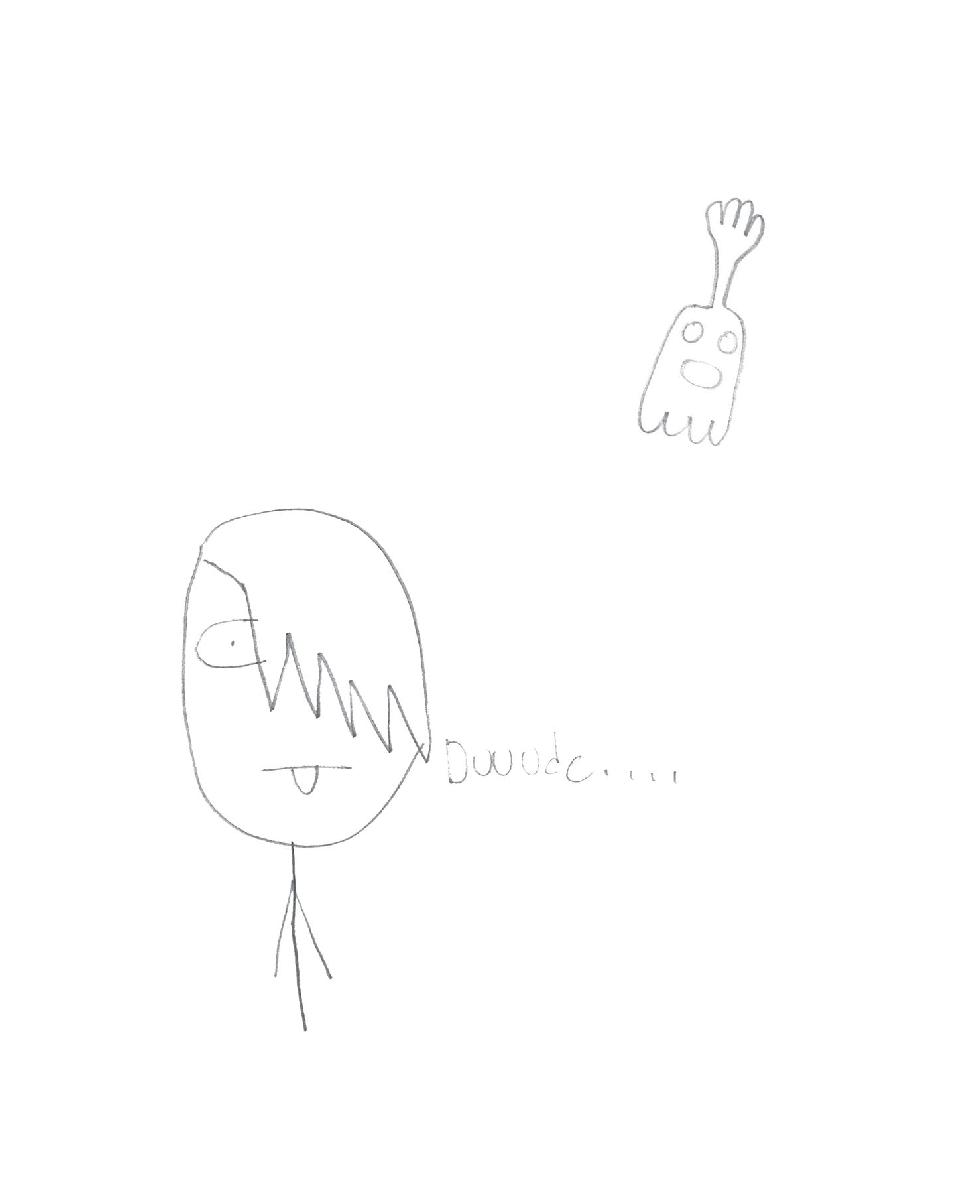
I would like to thank Lisa Hagan of Lisa Hagan Literary (formerly of Paraview), my valiant agent, who championed this book on intuitive mark making from the beginning. I also thank my wonderful and inspiring mentors, Dr. Laurie Nadel, PhD, and Dr. Eldon Taylor, PhD, for their time, generosity, and brilliance. I thank Anna Noak, my editor at Beyond Words, for connecting with the purpose, vision, and spirit in this book. And my husband, Simon Boughton, for his encouragement and support, always.
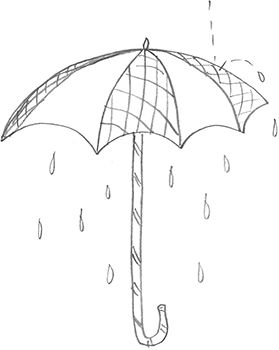

PAMELA EINARSEN
Elaine Clayton is an artist, author, certified Reiki Master, Intuitive Reader, workshop instructor, and the creator of Illuminara Intuitive Journal. She is the author and illustrator of several books for children, and illustrator of books by Pulitzer Prizewinning author Jane Smiley and Wicked author Gregory Maguire, among others. She practices Reiki and Intuitive Healing in New York City and Connecticut, where she lives with her family.

MEET THE AUTHORS, WATCH VIDEOS AND MORE AT
SimonandSchuster.com
authors.simonandschuster.com/Elaine-Clayton
 BeyondWordsPublishing
BeyondWordsPublishing BeyondWordsPub
BeyondWordsPub
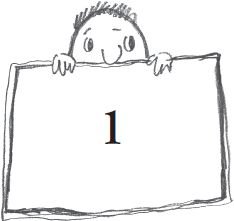
D rawing is a pathway to unconscious knowledge. There are two fundamental ways drawing functions as a catalyst for accessing deeper self-knowledge: first in the creation of a drawing, and then in reflecting on the creation. Drawing (and how we think and feel about it) has to do with perception. To draw is to feel, to emote, to express thought and feeling through line, shape, texture, and color. Comprehending or perceiving what has been drawn means finding meaning through thought, emotion, memory, and association. We perceive uniquely based upon our response to our environment and experiences, and that uniqueness is our own world of knowledge. Drawing engages cognition, the logical mind, while also waking our senses and inviting our emotions and thoughts to flow. Our conscious mind begins to work in unison with our unconscious mind. Making marks in a relaxed, meditative state allows the brain to function in harmony, opening us up to our full potential. Drawing fearlessly, with a sense of playfulness and pleasure in expression, widens the possibility for us to think and to feel harmoniously as both hemispheres become fully activated. Unconscious or unknown truths come into our awareness as ideas, solutions, and realizations. Through drawing, we realize what ideas or beliefs we were not aware of having. The conscious and unconsciouslogic and intuitionare linked by the act of drawing.
For this to happen, you must make marks without self-editing. Try to draw without hovering over yourself, directing, or criticizing yourself before you even get into a spontaneous, creative flow. You may have experienced this kind of loose, freestyle drawing when you were a young child, or perhaps more recently in an art class or on your own. Most likely you have drawn on the margins of paper, enjoying the marks you were making, commonly referred to as a doodle. And part of the reason you enjoyed these doodles is because you were relaxed about it; the marks you made were only for fun, or to help you endure a long, boring lecture at school or a meeting at work. Maybe you were doodling because you were nervous or anxious; spinning out what seemed like little insignificant drawings made you feel calmer inside. However, this kind of so-called insignificant drawing is tremendously significant. Even the smallest mark has a universe of information in it. The process you engaged in while doing these little drawings is incredibly powerful. By making marks with a relaxed or self-soothing disposition, you entered into a special relationship to yourself. You opened the floodgates to your imagination, your infinite potential to create.
Something happens when a mark is made, and this is where the gold is. You can change an open surface or blank piece of paper. Your choice to create a mark where there was nothing before has power; that force in and of itself is symbolic of life, human experience, and free will.
Many people in my workshops have described hearing derogatory comments about their drawingssome bad enough to make them stop drawing altogether. Even well-meaning remarks can sting. Comments vary from things like What a silly doodle! or That drawing is not very good to even worse, Thats a bad drawing; it doesnt even look like anything. Somebody may ask a child, When are you going to stop fooling around and get serious? implying that making art is a diversion, an irresponsible choice compared to more respectable ways to spend time and energy. The criticism people have about drawing is based on whether or not the viewer perceives the artist to have correctly captured his subject. It may also indicate a basic lack of appreciation for time spent making art.

Hearing these judgments is a natural result of growing up in a busy world that is becoming more technical each day and less focused on old fashioned art forms. Compared with fast-paced computer technology, drawing may not seem significant or useful. Teachers and parents try to raise children to be good self-advocates and help them develop the skills that will best prepare them for adult life. Believing that students are best served when they are educated with an emphasis on technology, science, and math, school culture veers heavily in that direction. Technology so rapidly advances and changes that it is indeed essential that time and resources be given to it to prepare and allow children to participate and innovate in a technological world. However, this means that when a school budget is cut, art is often the first thing to go, while technology-related classes and resources are given a priority. Making art is not as urgent as keeping up with technology. This choice seems to tell young people that drawing is not importantwhich isnt true at all. Drawing does not take away from learning other skills: in fact, it can enhance a persons sense of self. Drawing provides an opening for the artist to relax, quietly focus, elevate mental focus, and cultivate the mind more fully. It is a natural way of entering into a state of calm where we can bring forth our imagination and intuitive sensing and thinking skills. Drawing alleviates tension and also gives us the kind of bliss that arrives with other forms of meditation.
Calling a drawing a doodle conveys a very big message: a doodle is not a drawing and it is not important. We might as well call drawings thingamajigs. Long ago I stopped using the word doodle while I was teaching. That word simply did not reflect the respect and enthusiasm I had for my students work. I think we should change the language. I like to use the term stream drawing (and, in this book, intuitive stream drawing readings) instead. To me, what people call doodles are wonderful drawings, and they deserve a name that honors what is special and significant in them.
Font size:
Interval:
Bookmark:
Similar books «Making Marks»
Look at similar books to Making Marks. We have selected literature similar in name and meaning in the hope of providing readers with more options to find new, interesting, not yet read works.
Discussion, reviews of the book Making Marks and just readers' own opinions. Leave your comments, write what you think about the work, its meaning or the main characters. Specify what exactly you liked and what you didn't like, and why you think so.

